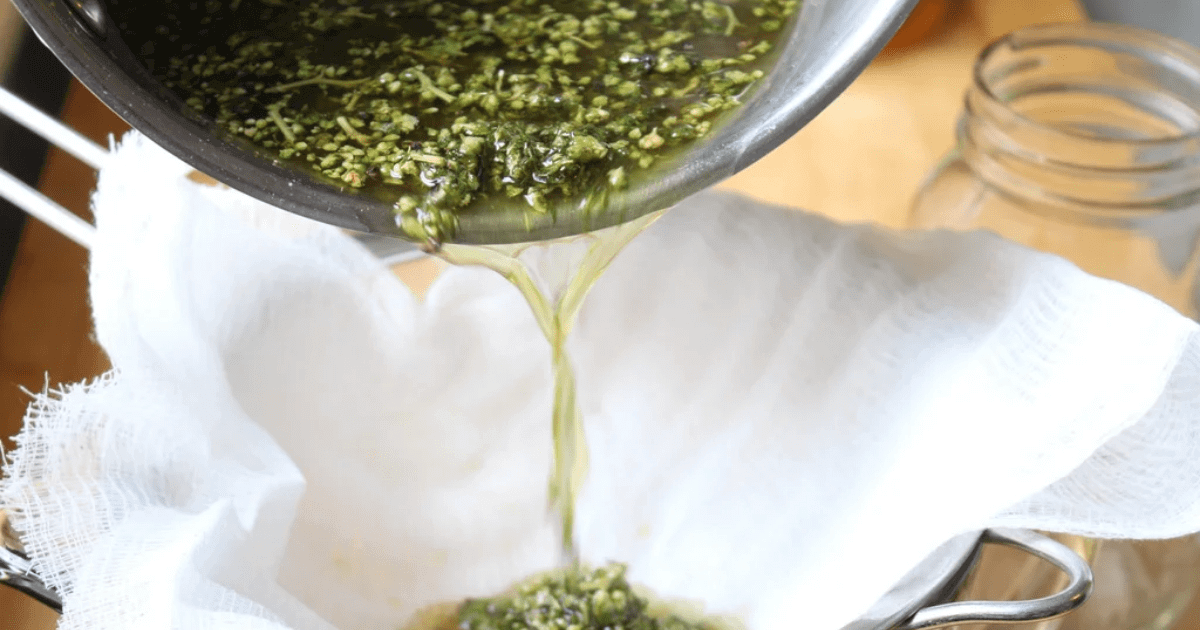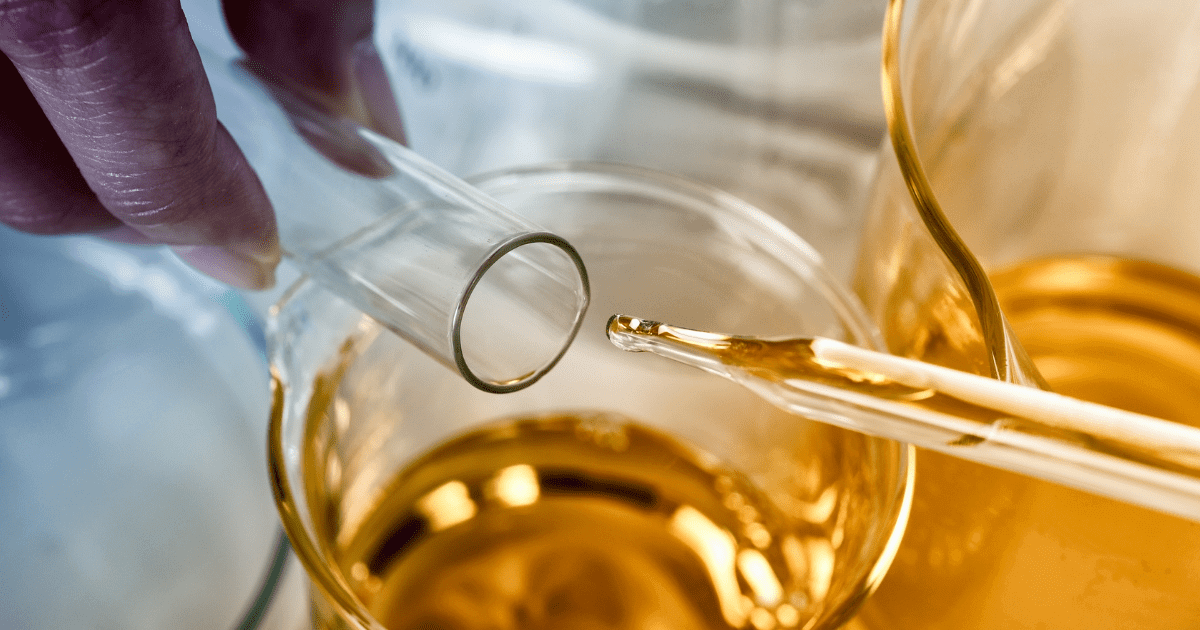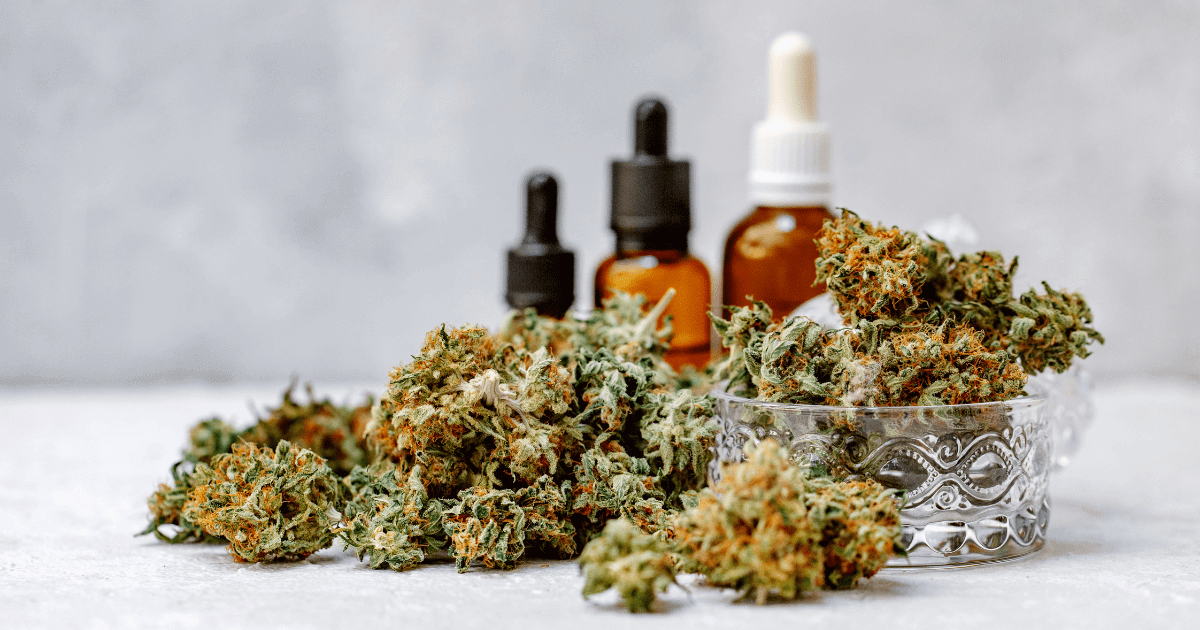Concentrates
Learn How To Make Cannabis Oil
Welcome to “Learn How to Make Cannabis Oil”! In this guide, we’ll explore the process of creating cannabis oil, also known as weed oil or marijuana oil. Cannabis oil has gained popularity for its potential therapeutic properties and versatility in consumption. Whether you’re interested in using it for medicinal purposes or simply want to explore its culinary possibilities, this comprehensive guide will provide you with valuable insights and step-by-step instructions.
Please keep in mind that the production and use of cannabis products may be subject to legal restrictions, so it’s crucial to adhere to the laws and regulations in your jurisdiction. Let’s dive in and discover the world of cannabis oil recipes and techniques to unlock the potential of this unique plant extract.
First Off, What Exactly is Cannabis Oil?
Cannabis oil is a concentrated liquid extract derived from the cannabis plant. It contains various cannabinoids, including THC (tetrahydrocannabinol) and CBD (cannabidiol), which are the primary active compounds found in cannabis. The potency and composition of cannabis oil can vary depending on factors such as the strain of cannabis used and the extraction method employed.
Cannabis oil can be made from different parts of the plant, including the flowers, leaves, or even the entire plant. It is known for its versatility and can be used for medicinal, therapeutic, or recreational purposes. Some people use cannabis oil to alleviate symptoms of certain medical conditions, such as chronic pain, inflammation, epilepsy, or to manage the side effects of cancer treatments. Others may use it recreationally for its psychoactive effects.
The composition and effects of cannabis oil depend on the specific cannabinoids present and their ratios. For example, THC is responsible for the psychoactive effects often associated with cannabis, while CBD is known for its potential therapeutic properties without the psychoactive effects. Different strains of cannabis, such as indica, sativa, or hybrid varieties, can have varying levels of these cannabinoids, resulting in distinct effects.
It’s important to note that the production, sale, and use of cannabis oil may be subject to legal restrictions in different jurisdictions. It’s crucial to familiarize yourself with the laws and regulations in your area to ensure compliance and responsible use.

How is Weed Oil Different From Other Cannabis Concentrates?
Weed oil, also known as cannabis oil, is a type of cannabis concentrate. Cannabis concentrates are products that have been processed to extract and concentrate the active compounds found in the cannabis plant, primarily cannabinoids like THC and CBD. While weed oil is a cannabis concentrate, there are other types of concentrates available as well.
Here are some key differences:
- Consistency: Weed oil typically has a liquid or oily consistency. It is often infused with a carrier oil, such as coconut oil or olive oil, to enhance its versatility and ease of use. Other cannabis concentrates can have different consistencies, such as waxes, shatters, budders, or resins, which are solid or semi-solid in nature.
- Extraction method: Weed oil can be made through various extraction methods, such as oil-based extraction or solvent-based extraction. Oil-based extraction involves infusing a carrier oil with cannabis, while solvent-based extraction utilizes solvents like ethanol or butane to extract the cannabinoids. Other cannabis concentrates may involve different extraction techniques, such as using heat and pressure (rosin), ice water (hash), or carbon dioxide (CO2 extraction).
- Potency and cannabinoid profile: The potency and cannabinoid profile can vary between different cannabis concentrates, including weed oil. Depending on the extraction method and the starting material, the concentration of cannabinoids like THC and CBD can differ. Some concentrates may have higher THC levels, resulting in more potent psychoactive effects, while others may contain higher CBD levels, providing potential therapeutic benefits without significant psychoactivity.
- Method of consumption: Weed oil is often consumed orally, either directly or by incorporating it into recipes or beverages. It can also be used topically or added to products like lotions or balms. Other cannabis concentrates have different methods of consumption. For example, concentrates like shatter or wax are typically vaporized or dabbed using specialized equipment, while hash can be smoked or vaporized.
It’s worth noting that the production, sale, and use of cannabis concentrates, including weed oil, may be subject to legal regulations. It’s important to be aware of the laws and regulations in your jurisdiction and consume these products responsibly and in compliance with the applicable laws.
Why Make Your Own Marijuana Oil?
There are several reasons why some individuals choose to make their own marijuana oil.
Here are a few benefits and motivations behind making marijuana oil at home:
- Control over ingredients and quality: By making your own marijuana oil, you have control over the ingredients used and can ensure the quality of the final product. You can select the strain of cannabis and the type of oil or solvent used for extraction, allowing you to tailor the oil to your preferences and desired effects.
- Cost-effectiveness: Making marijuana oil at home can be a more cost-effective option compared to purchasing pre-made oils from dispensaries or retailers. It allows you to obtain a larger quantity of oil for a lower cost, especially if you have access to cannabis plants or trimmings.
- Customization: Homemade marijuana oil provides the opportunity to customize the potency and cannabinoid profile according to your specific needs and preferences. You can experiment with different strains, ratios of cannabinoids like THC and CBD, and extraction methods to create an oil that suits your desired effects.
- Culinary applications: Marijuana oil can be used as an ingredient in various culinary creations, such as edibles, baked goods, or infused beverages. Making your own oil allows you to explore and experiment with different recipes, flavours, and dosages, adding a personalized touch to your culinary adventures.
- Availability and legal considerations: In some regions where access to commercial marijuana products may be limited or restricted, making your own marijuana oil can provide a way to obtain and use cannabis in a more accessible manner. However, it’s important to be aware of the legal regulations regarding the production and use of marijuana oil in your jurisdiction.
Remember, before making your own marijuana oil, it’s essential to research and comply with the laws and regulations in your area. Additionally, ensure you understand the potential risks, health implications, and responsible usage guidelines associated with cannabis products.
What Materials Do You Need to Make Homemade THC Oil?
To make homemade THC oil, you’ll need a few materials and ingredients. The specific materials required can vary depending on the extraction method you choose.
Here are the basic materials commonly used:
-
- Cannabis: Choose high-quality cannabis flower or trimmings. The strain and cannabinoid profile will affect the potency and effects of the THC oil.
- Extraction method:
- Oil-based extraction:
-
-
-
- Carrier oil: Select a suitable carrier oil, such as coconut oil, olive oil, or MCT oil, for infusing the cannabis.
- Cooking pot: A pot or saucepan to heat and mix the cannabis and carrier oil.
- Strainer or cheesecloth: To strain the plant material from the infused oil.
- Storage container: A clean, airtight container to store the THC oil.
-
-
- Solvent-based extraction (caution advised):
-
-
- Solvent: Choose a high-proof food-grade solvent like ethanol or isopropyl alcohol (if legal in your jurisdiction). Be cautious as these solvents are flammable and require proper handling and ventilation.
- Mason jar or glass container: To hold the solvent and cannabis during the extraction process.
- Coffee filters or cheesecloth: To filter the mixture and separate the plant material from the extracted oil.
- Double boiler or rice cooker: To evaporate the solvent and concentrate the THC oil.
- Silicone spatula or scraper: To collect the concentrated oil.
-
- Safety equipment: If you’re using solvent-based extraction, ensure you have proper safety equipment, such as gloves, safety goggles, and a well-ventilated area. Follow safety guidelines and take necessary precautions to minimize risks.
- Additional tools: Depending on the method you choose, you may need a grinder to prepare the cannabis, measuring utensils, a thermometer, and a stove or heat source for heating the mixture.
Remember to always prioritize safety, follow proper guidelines, and comply with the laws and regulations regarding cannabis and cannabis-related activities in your area.
Step-By-Step Guide on How to Make Cannabis Oil
Here’s a general step-by-step guide on how to make cannabis oil using the oil-based extraction method:
Note: Before starting the process, ensure that you are aware of and compliant with the legal regulations in your jurisdiction regarding cannabis and cannabis-related activities.
Step 1: Decarboxylation
- Preheat your oven to around 220-240°F (104-116°C).
- Grind your cannabis flower or trimmings coarsely.
- Spread the ground cannabis evenly on a baking sheet lined with parchment paper.
- Place the baking sheet in the preheated oven and bake for approximately 30-40 minutes. This process activates the cannabinoids by converting THCA into THC.
- Remove the baking sheet from the oven and let it cool.
Step 2: Infusion
- In a cooking pot, combine the decarboxylated cannabis and your chosen carrier oil (such as coconut oil or olive oil) in a desired ratio. A common ratio is 1 cup of oil for every 1 ounce (28 grams) of cannabis.
- Heat the mixture on low heat, stirring frequently, for about 2-3 hours. Ensure that the temperature remains below the oil’s smoke point (typically around 320°F or 160°C) to avoid burning.
- This gentle heat infusion allows the cannabinoids to dissolve into the oil.
- After the infusion period, remove the pot from the heat and let it cool slightly.
Step 3: Straining and Storing
- Place a strainer or cheesecloth over a clean container or bowl to strain the mixture.
- Carefully pour the oil mixture through the strainer or cheesecloth, allowing the oil to separate from the plant material.
- Gently press the plant material to extract as much oil as possible, but avoid squeezing or forcing it, as this may introduce unwanted impurities.
- Discard the strained plant material.
- Transfer the strained oil into a clean, airtight container suitable for storage.
- Store the cannabis oil in a cool, dark place, away from direct sunlight and heat, to maintain its potency and freshness.
Remember, the potency and effects of homemade cannabis oil can vary depending on factors like the strain of cannabis used, the extraction method, and the dosage. It’s important to start with a low dose and exercise caution when consuming cannabis-infused products. Additionally, be aware of the legal regulations in your area and ensure responsible use.
If you choose to explore other extraction methods, such as solvent-based extraction, it’s crucial to conduct thorough research, follow proper safety guidelines, and take necessary precautions to minimize risks associated with handling solvents.
Lastly, consulting with a medical professional or a cannabis expert can provide you with more specific guidance tailored to your needs and circumstances.

Important Things to Know When Making Weed at Home
When making weed or cannabis products at home, there are several important things to keep in mind.
Here are some key considerations:
- Legal regulations: Familiarize yourself with the laws and regulations regarding cannabis cultivation, possession, and production in your jurisdiction. Ensure that you are compliant with the applicable regulations to avoid any legal consequences.
- Safety precautions: Take necessary safety precautions when handling cannabis and any equipment or materials involved in the production process. This includes proper ventilation, appropriate safety gear (such as gloves and goggles), and following guidelines for handling flammable substances, if applicable.
- Sourcing quality cannabis: Choose high-quality cannabis strains or trimmings for making your weed products. Select reputable sources to ensure the safety and quality of the cannabis material you use.
- Understanding potency: Cannabis potency can vary based on strain, extraction method, and other factors. Start with low doses and gradually increase if needed. Understanding the potency of the cannabis you’re using will help you achieve the desired effects and avoid consuming too much.
- Extraction methods: There are various extraction methods for creating cannabis products, such as oil-based extraction or solvent-based extraction. Research and choose a method that aligns with your preferences, safety considerations, and available resources. Follow proper guidelines and procedures for the chosen extraction method.
- Labelling and storage: Properly label and store your homemade cannabis products. Clearly indicate the contents, potency (if known), and any other relevant information. Store them in childproof containers in a cool, dark, and dry place to maintain freshness and potency.
- Responsible consumption: Be aware of the potential effects and risks associated with consuming cannabis products. Start with low doses, understand your tolerance, and consume responsibly. It’s advisable to consult a healthcare professional, particularly if you have any pre-existing medical conditions or are taking medications.
- Education and ongoing learning: Stay informed about the latest research, best practices, and evolving regulations surrounding cannabis. Attend workshops, read credible sources, and seek guidance from experts to continually enhance your knowledge and ensure safe and responsible cannabis use.
Remember, the information provided here is for general guidance only. It’s crucial to conduct thorough research, follow applicable laws and regulations, and seek professional advice to ensure compliance, safety, and responsible use when making weed at home.
You Can Buy Cannabis Oil Online in Canada at Bulk Weed Canada
In the vibrant country of Canada, cannabis enthusiasts rejoiced at the arrival of a groundbreaking online marketplace. With a few clicks and the promise of discreet delivery, individuals seeking the therapeutic benefits of cannabis oil found solace in Bulk Weed Canada, the premier destination for purchasing cannabis oil online.
The website boasted an impressive array of options, from THC-rich concoctions to CBD-dominant elixirs, each meticulously crafted and lab-tested for quality assurance. In the comfort of their homes, customers explored the virtual aisles, carefully selecting their desired cannabis oil, confident in the knowledge that their order would be handled with professionalism and delivered with utmost care.
The emergence of Bulk Weed Canada revolutionized the way Canadians accessed this powerful botanical elixir, empowering them to embark on their wellness journey with convenience and peace of mind when you buy weed oil online in Canada.
References
WebMB. (2020). CBD vs. THC: What’s the Difference? Available at: https://www.webmd.com/pain-management/cbd-thc-difference#1
Daily Marijuana. (2023, September 1). Buy Weed Oil Online in Canada. Available at: https://www.dailymarijuana.io/
Government of Canada. (2001, June 14). Marihuana Medical Access Regulations. Justice Laws Website. Available at: https://lois-laws.justice.gc.ca/eng/regulations/sor-2001-227/page-1.html
Cornerstone Wellness. (2022) The Different Types of Cannabis Concentrates. Cornerstone Collection. Available at: https://cornerstonecollective.com/the-different-types-of-cannabis-concentrates/

